In Re Lady Lawyers:
The Rise of Women Attorneys and the Supreme Court
Belva Lockwood: Becoming a Lawyer
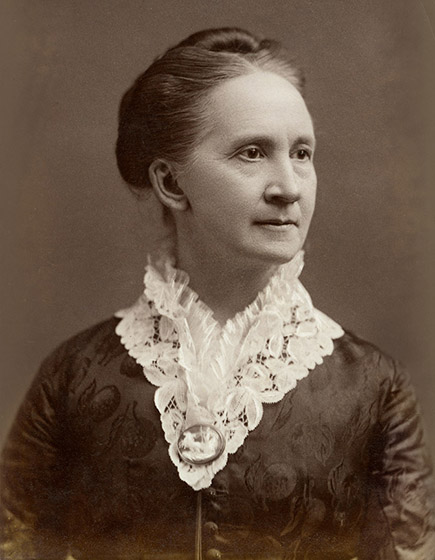 Belva Lockwood, attributed to Benjamin Falk, c. 1880-1884.
Belva Lockwood, attributed to Benjamin Falk, c. 1880-1884.
Belva Lockwood’s interest in law and politics brought her from upstate New York to Washington, D.C., in 1866. Later that year, she opened her own seminary school for women and became part of a community of progressive women activists who participated in the temperance and suffrage movements.
In 1871, 15 women, including Lockwood, enrolled at the National University Law School (now part of George Washington University) in Washington, D.C. The following year, Lockwood and another woman completed the program, after which law school administrators told them they would not receive diplomas. Lockwood appealed to President Ulysses S. Grant, who was chancellor ex officio of the National University, and she received her diploma one week later.
Supreme Court Bar Admission: Mrs. Lockwood’s Victory
“[T]he Court which has said to woman ‘You cannot enter here,’ must now open its doors at her approach when she comes armed with the proper documents…”
— Myra Bradwell, Chicago Legal News, February 15, 1879
Albert G. Riddle, a Washington lawyer, moved Belva Lockwood for admission to the Supreme Court Bar in October 1876. The Court rejected Lockwood’s application. When Chief Justice Morrison R. Waite denied the motion, he announced that “none but men are admitted to practice before [the Court] as attorneys and counsellors . . .”
This legal setback prompted Lockwood to garner support from male attorneys and members of Congress for the creation of legislation that
would allow qualified women to be admitted to the Supreme Court Bar. A bill titled “An act to relieve certain legal disabilities
of women” was debated several times in both the House of Representatives and the Senate in 1878 and 1879, and was eventually enacted. Popularly known as the “Lockwood Bill,” President Rutherford B. Hayes signed it into law. On March 3, 1879, Riddle again moved Lockwood’s admission to the Supreme Court Bar, and the Court admitted her.
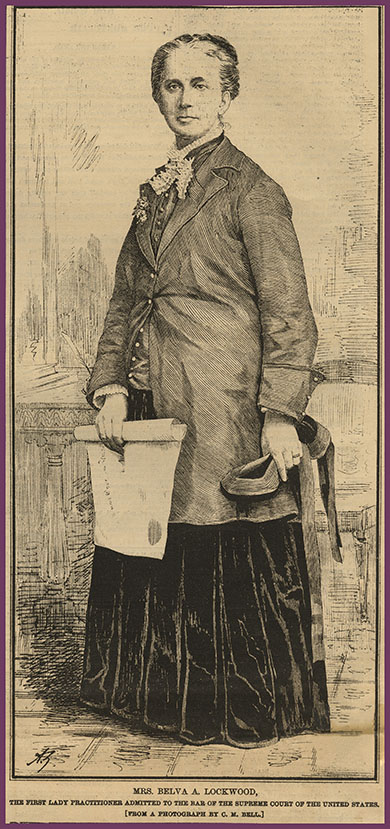 Belva Lockwood holding her Supreme Court Bar Certificate, The Daily Graphic, March 22, 1879.
Belva Lockwood holding her Supreme Court Bar Certificate, The Daily Graphic, March 22, 1879.
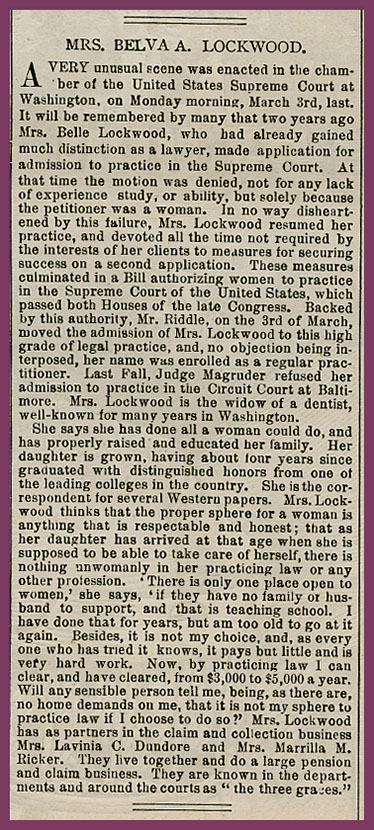 “Mrs. Belva A. Lockwood,” Frank Leslie’s Illustrated Newspaper, April 5, 1879.
“Mrs. Belva A. Lockwood,” Frank Leslie’s Illustrated Newspaper, April 5, 1879.
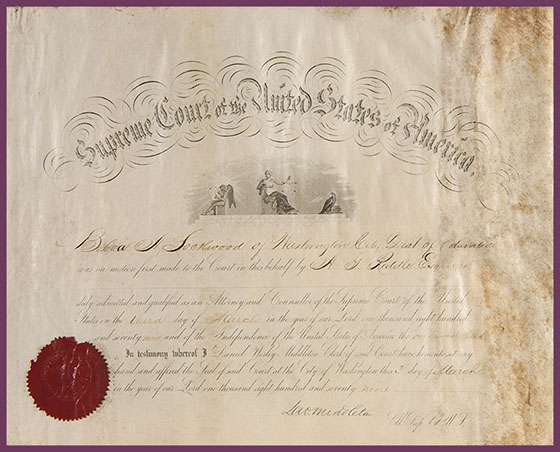 Belva Lockwood’s 1879 Supreme Court Bar Certificate
Belva Lockwood’s 1879 Supreme Court Bar Certificate
Fenimore Art Museum Library, Cooperstown, New York, Belva Lockwood Collection, coll. 213.01
Arguing Before the Court
Kaiser v. Stickney (1880)
In November 1880, Belva Lockwood became the first woman to argue before the Supreme Court when she appeared in Kaiser v. Stickney, 102 U.S. 176 (1880). The case concerned a $16,000 debt owed by Lockwood’s client, Caroline Kaiser. Ironically, given Lockwood’s beliefs and experience, she and her co-counsel invoked the legal doctrine of coverture—under which a married woman was deemed to be under her husband’s legal protection and authority—to contend that Kaiser did not have to pay the money owed. Lockwood argued in Court on Kaiser’s behalf for 20 minutes. Although Kaiser lost her case, Lockwood made history.
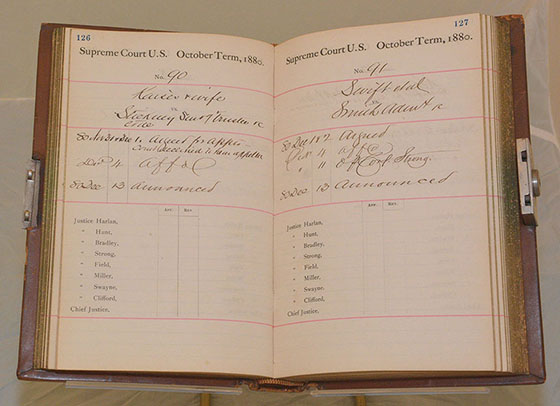 Justice Noah H. Swayne’s Docket Book, open to the entry for Kaiser v. Stickney on the left, October Term 1880.
Justice Noah H. Swayne’s Docket Book, open to the entry for Kaiser v. Stickney on the left, October Term 1880.
United States v. Cherokee Nation (1906)
Lockwood’s most famous argument was in United States v. Cherokee Nation, 202 U.S. 101 (1906), which brought her before the Supreme Court a second time. Lockwood represented the Cherokee Nation, which sought full payment from the federal government under an 1835 treaty in which the tribe had ceded land in Georgia to the federal government for $1 million. The government had not paid in full. The lower court ordered the government to pay the balance owed, and the government appealed to the Supreme Court. Over two days, Lockwood successfully argued to uphold the judgment for the money owed, with interest, to the Cherokee Nation. The result was a $5 million dollar payment, one of the largest made to that date to a Native American tribe for land ceded to the government.
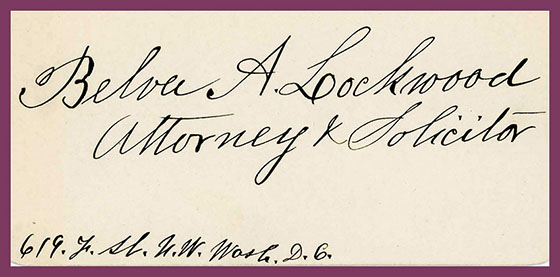 Belva Lockwood’s handwritten business card, c. 1873-1917.
Belva Lockwood’s handwritten business card, c. 1873-1917.